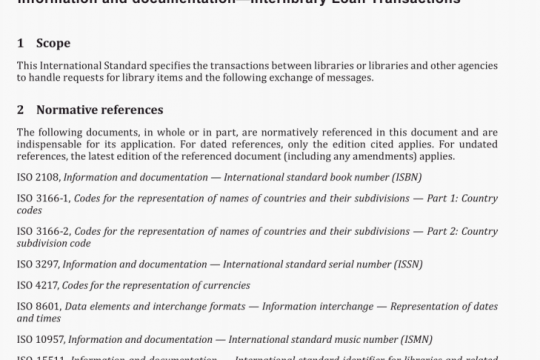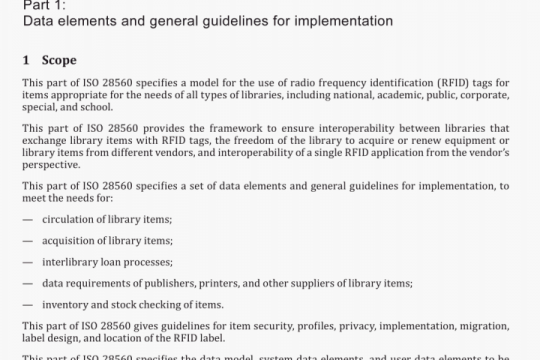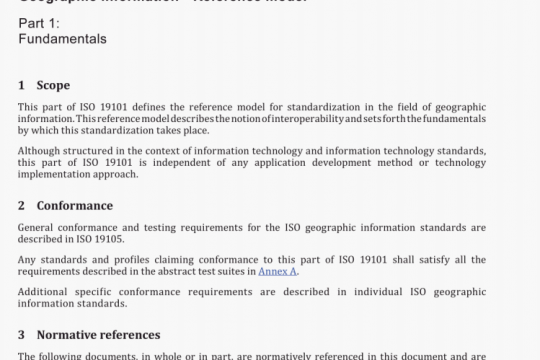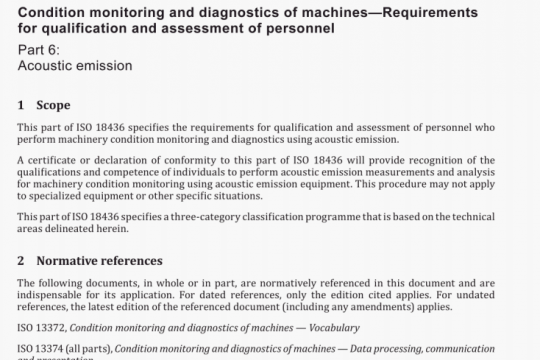ISO 18481:2017 pdf free
ISO 18481:2017 pdf free.Hydrometry一Liquid flow measurement using end depth method in channels with a free overfall
A preliminary survey shall be made of the physical and hydraulic features of the proposed site to check that it conforms (or may be made to conform) to the requirements necessary for measurement by the end depth method. The potential application of this method of flow measurement is at proposed or existing water and waste water treatment plants, where flumes and channels form part of such installations. The discharge measurement using end depth can be installed on existing flumes and channels after verification that they conform to the requirements necessary for measurement by the end depth method or they can be modified to make them conform to the requirements. Particular attention should be paid to the following features in selecting the site and ensuring the necessary flow conditions.
a) An adequate straight length (at least 20he, where he is the end depth corresponding to the maximum discharge anticipated) of channel of regular cross-section should be available upstream of the drop.
b) The flow in the approach channel shall be uniform and steady, with the velocity distribution approximating that in a channel of sufficient length to develop satisfactory flow in smooth, straight channels. Baffles and flow straighteners can be used to simulate satisfactory velocity distribution,but their location with respect to the measuring section shall be not less than the minimum length prescribed for the approach channel.
c) The channel bottom should be horizontal. Gentle positive slopes not greater than 1 in 2 000 are admissible; the flow shall be sub-critical, practically uniform upstream of the drop, and the water surface shall be relatively stable and free from perturbations at even during low velocities.
d) The side walls, as well as the bottom, shall be smooth as far as possible (in this document, a smooth surface shall correspond to a neat cement finish). The finish of the structure shall be well maintained; changes in wall roughness due to various forms of deposition will change the discharge relationship.
e) The end (face) of channel shall be normal to its longitudinal centre line and water shall be allowed to fall freely beyond this point.
f) In the case of a confined nappe, the downstream side walls shall be extended to a distance not less than six times the maximum end depth.
g) In the case of unconfined nappe, the side walls shall end at the drop and nappe should be completely free at the sides to permit unrestricted spreading.ISO 18481 pdf download.




